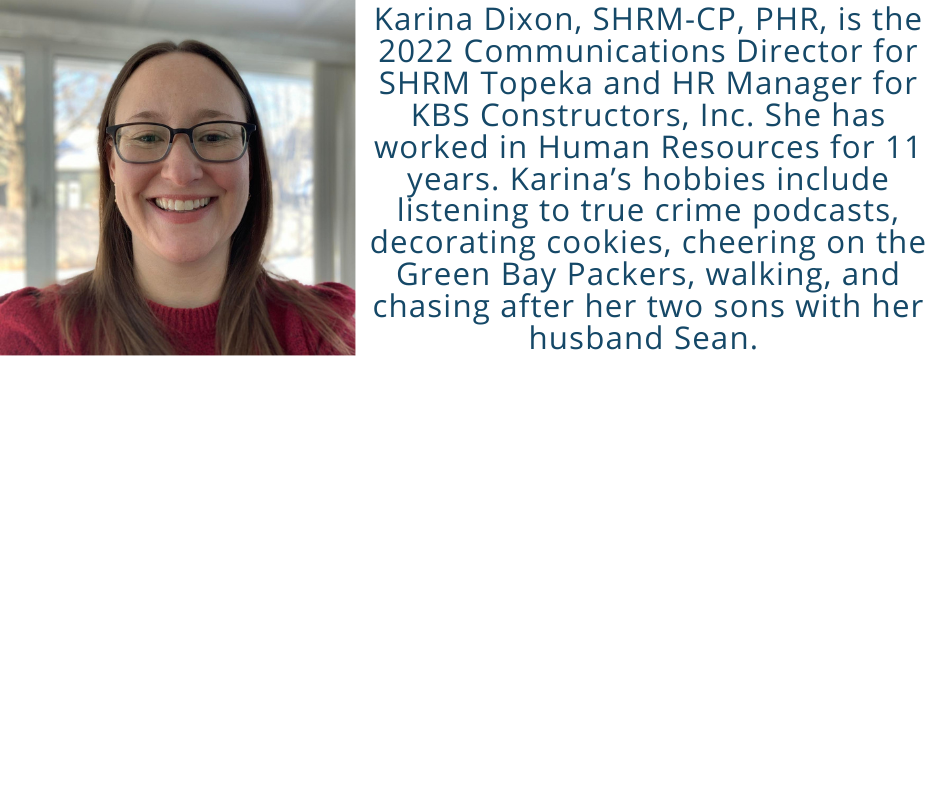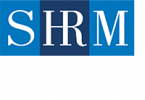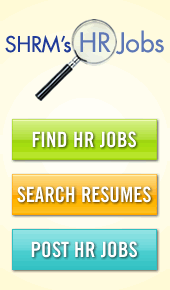Diversity, Equity & Inclusion Panel: Takeaways and Resources

SHRM Topeka held a Diversity, Equity and Inclusion Panel and Training on July 21st. We had a great group of panelists and an awesome speaker, Jermaine Jamison, that led our "Starting with Inclusion" training session. Here are my four takeways from this event, a few of my favorite quotes, and additional resources.
1. Educate Yourself.
The topic of DEI seems to be everywhere, but have you taken the time to truly educate yourself? Our panel moderator, Glenda Washington, recommended the book Authentic Diversity: How To Change the Workplace for Good by Michelle Silverthorn. Panelist Saida Bonifeld provided us with her list of Selected Diversity, Equity, and Inclusion Books by Topic. In 2020, SHRM launched Together Forward @Work, an initaitive designed to bring about open dialgue about racial inequity in the workplace. This is an excellent resource for research, tangible tools and reports and recommendations from SHRM's Blue Ribbon Commission on Racial Equality.
2. Be Aware of Your Privilege.
An article from Hive learning describes 5 main types of privilege:
- White privilege
- Religious privilege
- Gender privilege
- Heterosexul privilege
- Soci-economic privilege
Read more about how to identify and utilize your privilege with these resources:
Use Your Everyday Privilege to Help Others, Harvard Business Review
Diversity Toolkit: A Guide to Discussing Identity, Power and Privilege, USC
How to Be an Adovcate if You Are A Person with Privilege, University of Central Florida
3. Be Intentional.
One of my favorite quotes from panelist Luis Estrada was, "I personally chose to change the I [in DEI] to intentional. There has to be intention in the choices we make, not just to check the box."
Panelist Jermaine Jamison stated, "The acronym [DEI] should be inclusion, equity and diversity based on my lived experiences. Diversity, in my opinion, is legislative and mandated. Inclusion is a choice...it's about humanity. Choose to include people."
Too many organizations are pushing DEI initiatives simply to check the box. As HR professionals, we can help shift the mindset to be on people as individuals versus just another business metric.
So how can we be intentional in the workplace? An article from TalentCulture, How to Intentionally Create a More Inclusive Culture, includes four key inclusive leadership behaviors:
- Empowerment: Enable team members to grow and excel by encouraging them to solve problems, come up with new ideas and develop new skills.
- Accountability: Show confidence in team members by holding them responsible for aspects of their performance that are within their control.
- Courage: Stand up for what you believe is right, even when it means taking a risk.
- Humility: Admit mistakes, learn from criticism and different points of view, and overcome your limitations by seeking contributions from team members.
15five, a holistic performance management company, published a blog post post titled Intentional Inclusion in the Workplace: Holding People Ops to a Higher Standard. Here they list specific ways of how they can further integrate diversity, equity, and inclusion into the fabric of their organization.
4. Engage With Others Who Are Different from You.
When asked about resources to help our audience with their DEI journey, Michael, Jermaine and Luis discussed people as your greatest resource. Intentional Inclusivity in a Five-Minute Read from Forbes states, "Commit to experiencing people and not populations." Don't put someone in a box just because of one aspect of themselves. Take the time to actively listen to others about their background and culture--and about them as a individual.
What takeaways would you add to this list?





